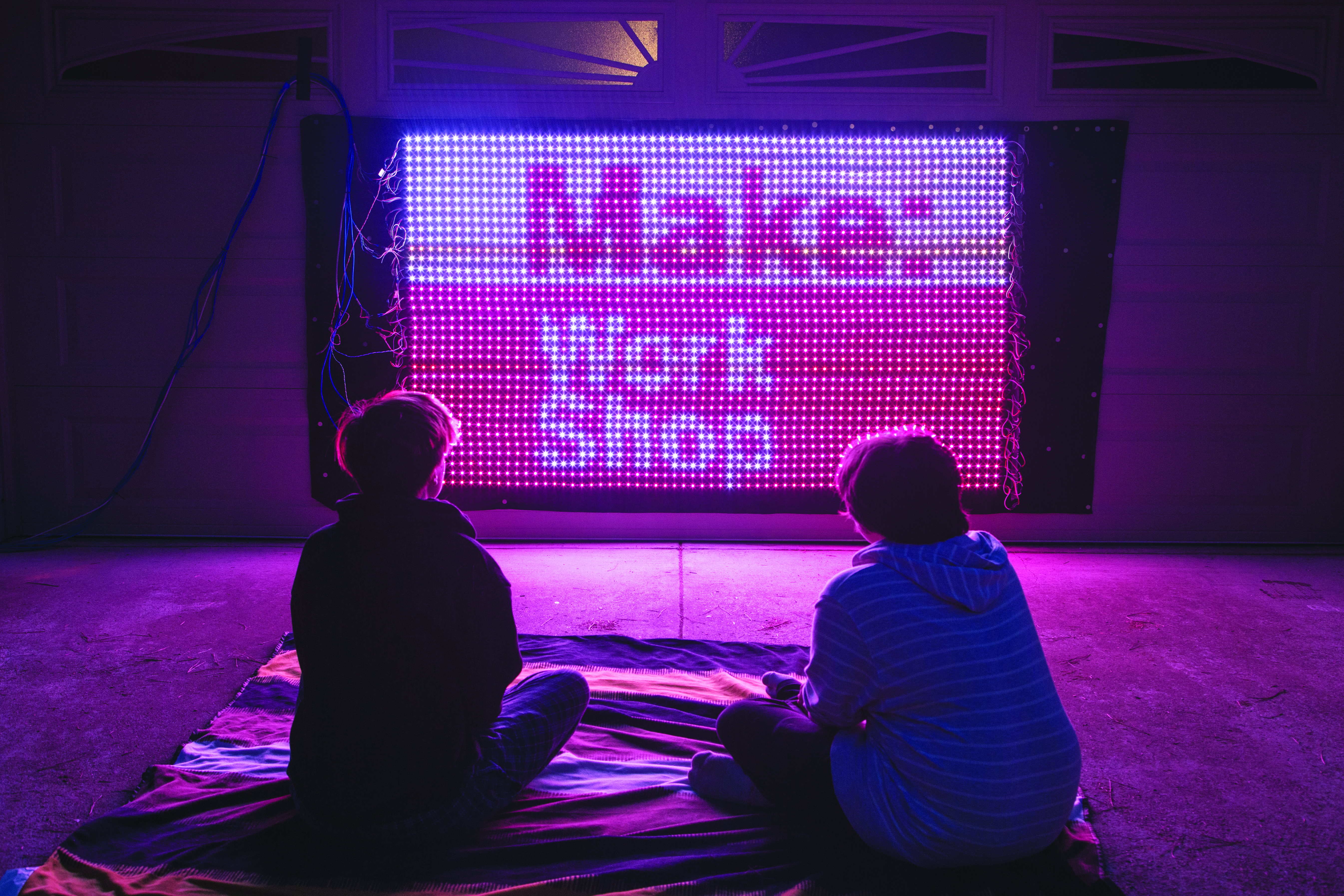It’s a giant DIY TV! When you’re done building it, making the lights do what you want is as easy as editing a video — no coding required. Hang your LED screen on a wall, or take it to your next outdoor festival and blow people’s minds.
I’ve written open source code to upload any video from anywhere to your new LED wall. All you have to do is put it together. The Teensy microcontroller from PJRC, paired with their OctoWS2811 shield, makes controlling lots of LEDs really easy using the Arduino programming environment.
This project, when completed, measures more than 2m (6′) wide, so it is best done with a friend.
Read through these steps. Knowledge is power!
When you’re done, show us what you got! Tweet your finished wall to @marginallyc and @make, and share in the comments below!



